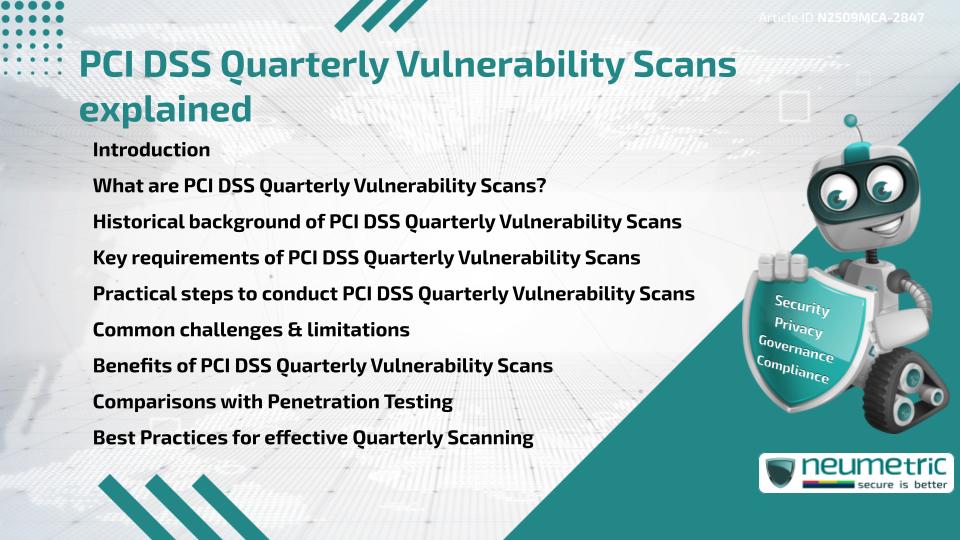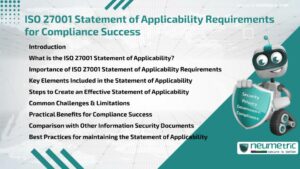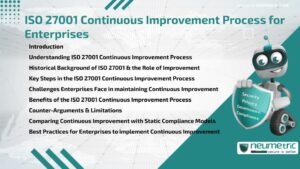Table of Contents
ToggleIntroduction
The PCI DSS Quarterly Vulnerability Scans are a critical requirement for Businesses that handle Payment Card Data. These Scans help identify Security Weaknesses in Systems that could expose Cardholder Information to Cyber Threats. Conducted every three (3) months, they ensure that Organisations maintain Compliance with Payment Card Industry Data Security Standard [PCI DSS] guidelines. The process involves running Scans using Approved Scanning Vendors [ASVs] to detect Vulnerabilities in external-facing systems. In this article, we explore what PCI DSS Quarterly Vulnerability Scans are, their background, requirements, challenges & best practices for Businesses.
What are PCI DSS Quarterly Vulnerability Scans?
The PCI DSS Quarterly Vulnerability Scans are External Assessments that evaluate the security of systems connected to the internet. These Scans focus on identifying misconfigurations, missing patches & exploitable weaknesses. According to PCI DSS, Businesses must use ASVs certified by the PCI Security Standards Council to perform these Scans. Passing the Quarterly Scans is necessary for demonstrating Compliance & continuing to process Payment Card Transactions.
Historical background of PCI DSS Quarterly Vulnerability Scans
The concept of Vulnerability scanning emerged in the late 1990s as Businesses sought ways to automate the detection of common security flaws. With the launch of PCI DSS in 2004, Quarterly Vulnerability Scans became a standardised requirement. Over time, the PCI DSS Quarterly Vulnerability Scans have adapted to evolving Cyber Threats, incorporating modern scanning techniques to detect increasingly sophisticated Vulnerabilities.
Key requirements of PCI DSS Quarterly Vulnerability Scans
The PCI DSS Quarterly Vulnerability Scans include several key requirements:
- Frequency: Scans must be performed once every three (3) months.
- Scope: All externally facing systems that handle or connect to Cardholder Data must be scanned.
- Approved Scanning Vendors: Only ASVs recognised by the PCI Security Standards Council may conduct Scans.
- Passing Results: Businesses must achieve a passing score with no High-Risk Vulnerabilities.
- ReScans after Remediation: Any identified issues must be fixed & re-scanned to confirm resolution.
Practical steps to conduct PCI DSS Quarterly Vulnerability Scans
Businesses can follow a structured approach to meet PCI DSS Quarterly Vulnerability Scans:
- Identify scope: Determine all Internet-facing Assets in scope for PCI DSS Compliance.
- Select an ASV: Choose a certified Vendor listed by the PCI Security Standards Council.
- Schedule Scans: Run Scans Quarterly, ideally before deadlines to allow time for remediation.
- Review Results: Assess Vulnerabilities reported & prioritise fixes for High-Risk issues.
- Remediate & Re-scan: Address flaws & submit passing results for Compliance validation.
Common challenges & limitations
Meeting the PCI DSS Quarterly Vulnerability Scans requirements can be difficult for some Businesses. Common challenges include limited Awareness of Scope, delays in Remediation & Resource constraints for fixing Vulnerabilities quickly. Another limitation is that Vulnerability Scans are automated, so they may produce false positives or miss certain complex security issues that require Manual Testing.
Benefits of PCI DSS Quarterly Vulnerability Scans
Despite the challenges, PCI DSS Quarterly Vulnerability Scans provide significant benefits:
- Early detection of weaknesses in Internet-facing Systems
- Continuous Compliance with PCI DSS Standards
- Reduced Likelihood of costly Breaches
- Increased Customer Trust & Brand Protection
- Stronger alignment with Global Cybersecurity Practices
Comparisons with Penetration Testing
While both Quarterly Vulnerability Scans & Penetration Testing are part of PCI DSS, they serve different purposes. Vulnerability Scans are automated, recurring checks for known flaws, while Penetration Testing involves manual exploitation of Vulnerabilities to assess real-world Risks. Penetration Testing occurs annually or after major changes, whereas PCI DSS Quarterly Vulnerability Scans must happen every three (3) months.
Best Practices for effective Quarterly Scanning
To maximise the effectiveness of PCI DSS Quarterly Vulnerability Scans, Businesses should:
- Run Scans before deadlines to allow time for Remediation.
- Keep System Inventories updated to ensure all Assets are in Scope.
- Combine Scans with Internal Vulnerability Assessments for broader coverage.
- Educate IT Staff to understand & prioritise scan findings.
- Establish a consistent process for Remediation & Re-testing.
Conclusion
The PCI DSS Quarterly Vulnerability Scans are an essential Compliance requirement for any Business processing Payment Card Data. By conducting Scans every three (3) months, working with certified ASVs & addressing Vulnerabilities promptly, Organisations can strengthen their defenses against Cyber Threats & maintain Trust with their Customers.
Takeaways
- Quarterly Vulnerability Scans are mandatory for PCI DSS Compliance.
- Businesses must use Certified Approved Scanning Vendors.
- All internet-facing systems must be scanned every three (3) months.
- Vulnerabilities must be Remediated & Re-scanned until Passing.
- Scans reduce Risks & demonstrate ongoing Compliance.
FAQ
What is the purpose of PCI DSS Quarterly Vulnerability Scans?
The purpose is to identify & fix Vulnerabilities in Internet-facing Systems to protect Cardholder Data.
Who can conduct PCI DSS Quarterly Vulnerability Scans?
Only Approved Scanning Vendors Certified by the PCI Security Standards Council can perform these Scans.
How often should PCI DSS Quarterly Vulnerability Scans be conducted?
They must be performed every three (3) months or Quarterly.
What happens if a Business fails PCI DSS Quarterly Vulnerability Scans?
The Business must remediate the Vulnerabilities & Re-scan until a passing result is achieved.
How are PCI DSS Quarterly Vulnerability Scans different from Penetration Testing?
Scans are automated & recurring, while Penetration Tests are manual & performed annually or after System changes.
Do Small Businesses need to conduct PCI DSS Quarterly Vulnerability Scans?
Yes, all Businesses that process, store or transmit Payment Card Data must comply regardless of size.
What systems are included in PCI DSS Quarterly Vulnerability Scans?
All External Systems connected to the Internet that handle or interact with Cardholder Data must be scanned.
Need help for Security, Privacy, Governance & VAPT?
Neumetric provides organisations the necessary help to achieve their Cybersecurity, Compliance, Governance, Privacy, Certifications & Pentesting needs.
Organisations & Businesses, specifically those which provide SaaS & AI Solutions in the Fintech, BFSI & other regulated sectors, usually need a Cybersecurity Partner for meeting & maintaining the ongoing Security & Privacy needs & requirements of their Enterprise Clients & Privacy conscious Customers.
SOC 2, ISO 27001, ISO 42001, NIST, HIPAA, HECVAT, EU GDPR are some of the Frameworks that are served by Fusion – a SaaS, multimodular, multitenant, centralised, automated, Cybersecurity & Compliance Management system.
Neumetric also provides Expert Services for technical security which covers VAPT for Web Applications, APIs, iOS & Android Mobile Apps, Security Testing for AWS & other Cloud Environments & Cloud Infrastructure & other similar scopes.
Reach out to us by Email or filling out the Contact Form…





